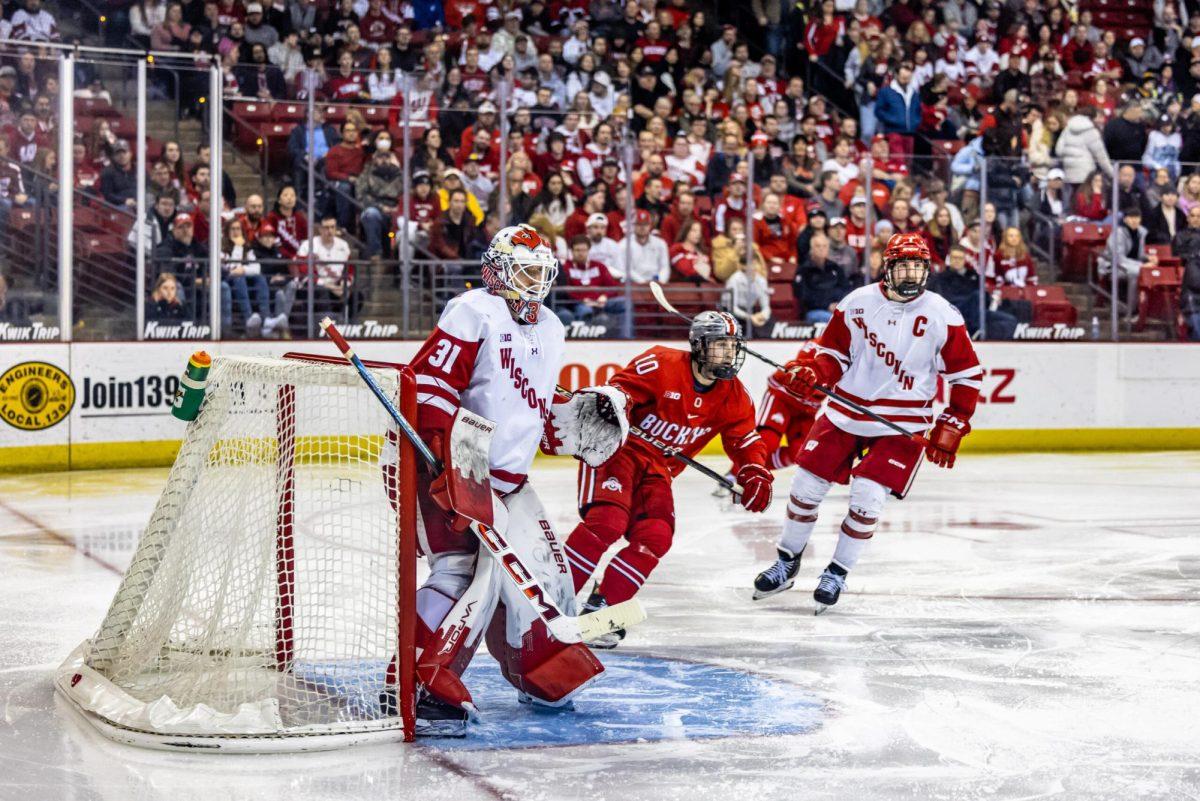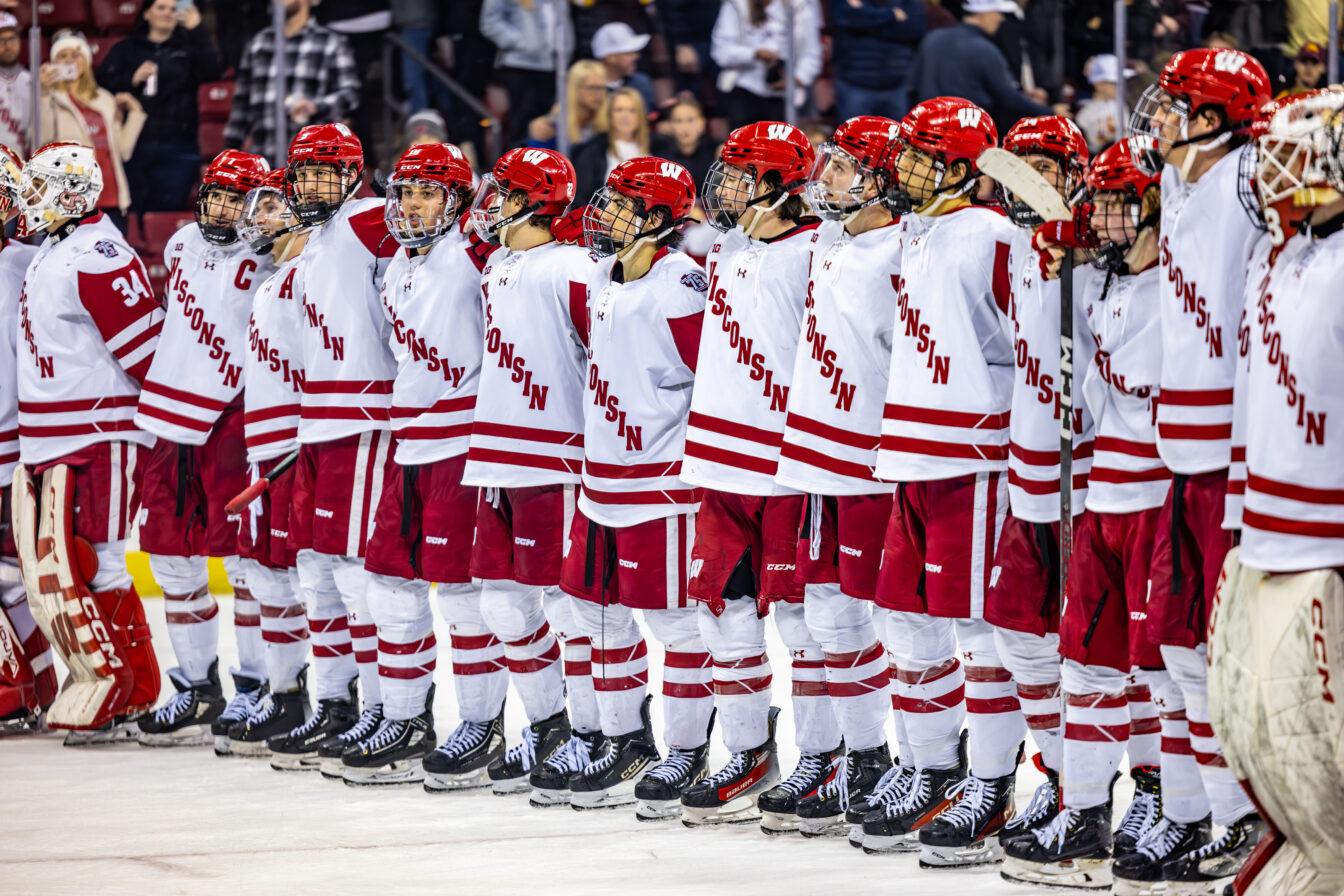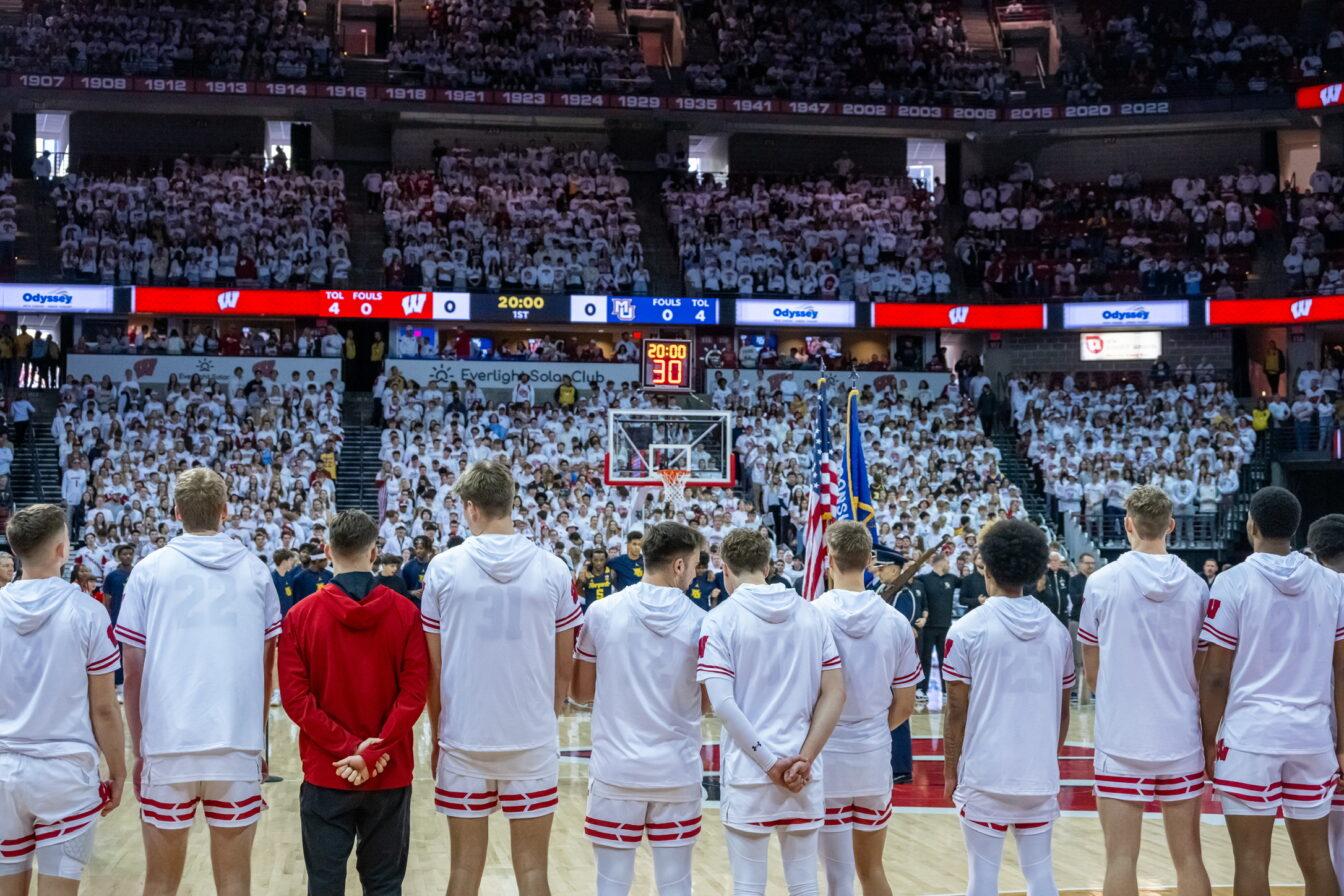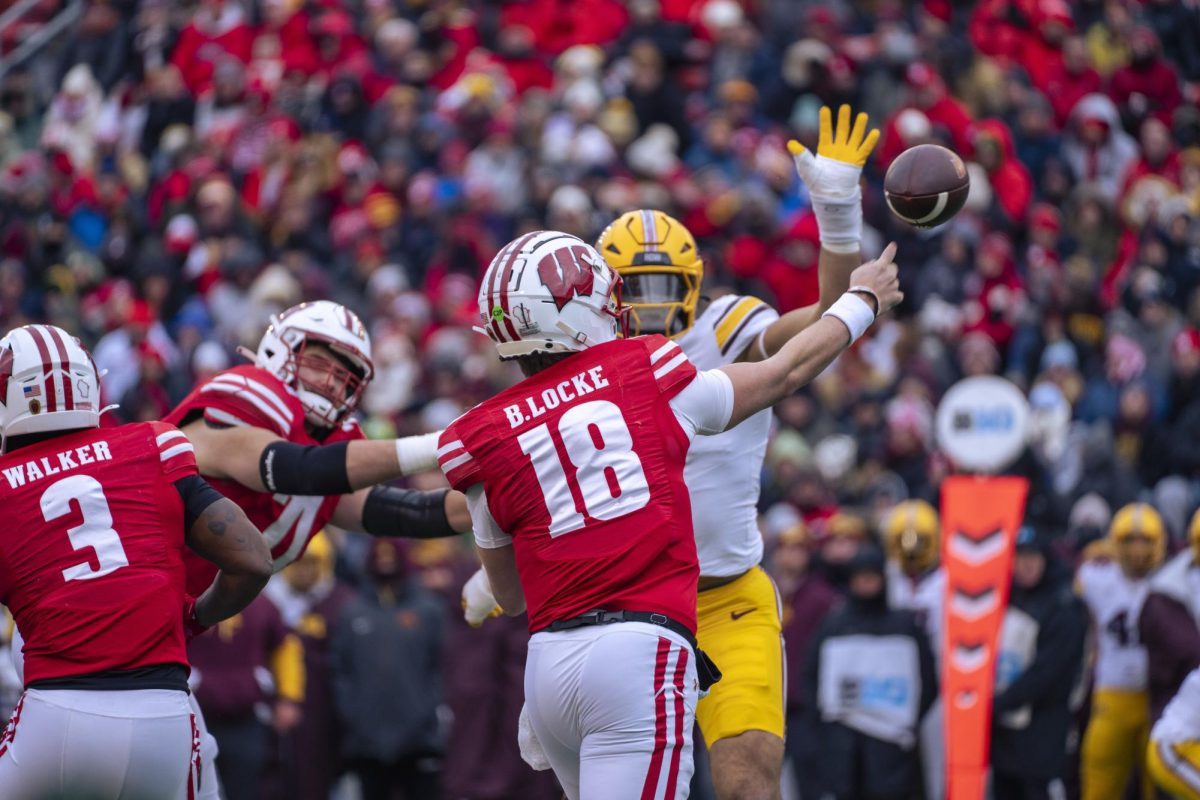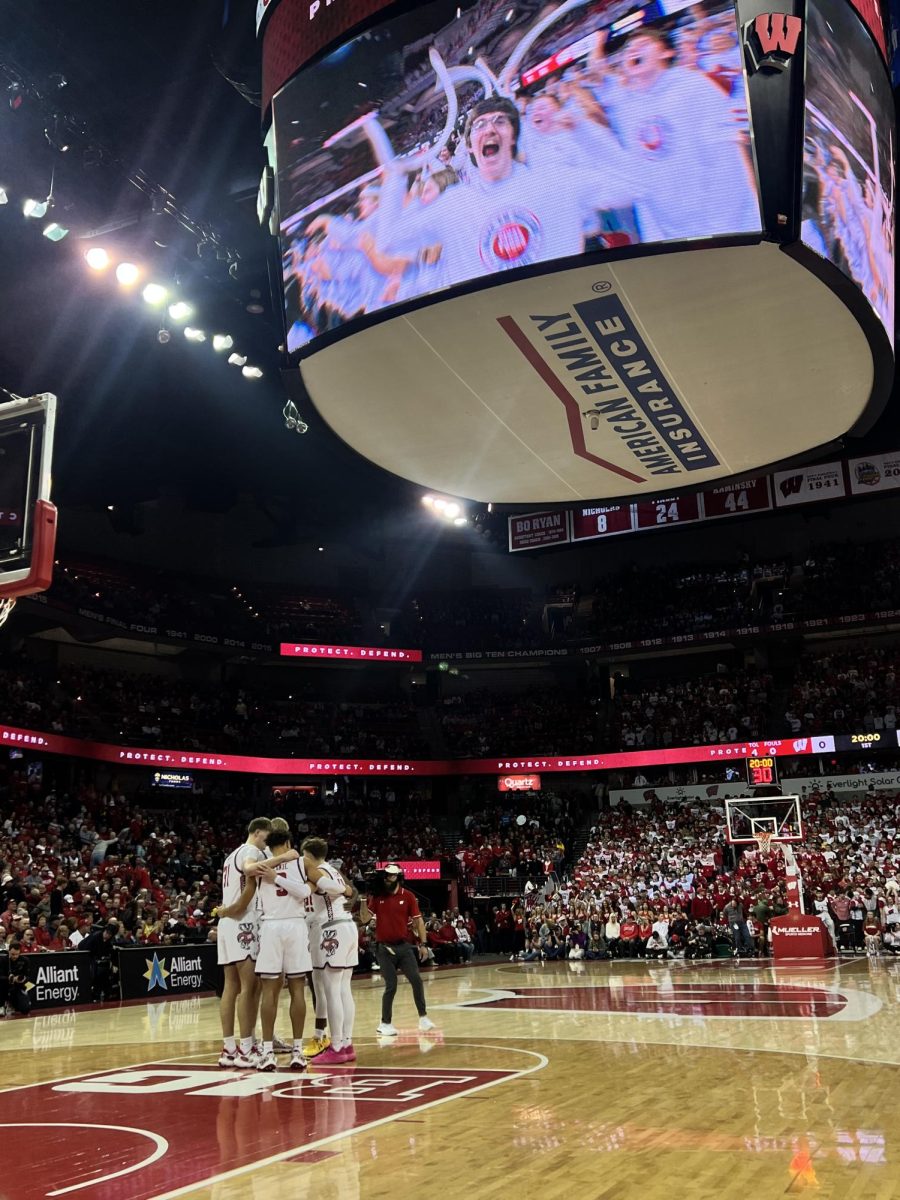
Unfortunately for the Wisconsin men’s hockey team, the end came sooner than hoped after only one hard-fought series in the postseason. Similarly, head coach our discussion with head coach Mike Eaves about the season is finally drawing to a close, but not before discussing his freshman forwards and just what fans can expect next season.
Kelly Erickson: [What’s new with] forwards?
Mike Eaves: Let’s go down the middle first because we had [freshman Brendan Woods] down the middle there. One of our philosophies is, if a young man comes in as a center iceman, we try to get him at the wing because of the responsibility for our center icemen. And because of injuries and such, we had to put Woodsy at center a little earlier than we wanted to during the course of the season. But by the end of the year, he was a legitimate player for us down the middle.
The thing that’s nice about Woodsy is – and I know from experience – it’s hard to play against a guy that’s big like that. Six foot three, 210 pounds and all elbows and knees and sticks, and he likes to hit. He’s a monster to play against when he plays the way that he needs to. So that was kind of fun to see, that he’s understanding our systems. He knew what his job was down low in our zone and all over the ice, so that was nice growth for him.
I think Joseph LaBate, Matt Paape, Brad Navin all, they all got to be in offensive situations in a secondary role on the power play; that’s what they could bring, but their growth pattern – there were nights their eyes were as big as saucers. Going into North Dakota, Mankato, Denver – that first night it’s like ‘Whoa, what’s coming at us right now?’ But again, because of those experiences, next year we go to those places, been there done that, let’s get it done here now. They’re competitive, they understand the pace, they know our systems, so we just expect another – like we talked about our sophomores this year, how they exponentially grew – we think that those young freshmen should do the same because they played, we had no choice and they, under the fire, got their initiation. Their growth will be fun to see how that transfers into next year.
KE: What is the offseason focus?
ME: Well, right now, when you’re not coaching, you’re recruiting, so we’ve been on the trail every week. We’ll do year-end reviews as we always do with each young man and kind of lay out, ‘OK, where do you see your growth this summer? Where would you like to see yourself coming into next year?’ I think that’s really important because it sets some expectations, and it gives them some things to work on for over the course of the summer. Then they come in and say ‘OK, this is what we talked about; did you meet those?’ Because by meeting those goals over the summer that you set in the spring, that’s going to project what you accomplish next year. We’ll do an awful lot of that.
Strength coach Jim Snider will have the boys one month before school is done, so we get to jump on that and get a good start. We’ll be able to get on the ice with them a little bit here and work on our skill sets some more. People see us during the course of the season, and they say ‘Well they’re practicing and they’re playing.’ Well yes, but there’s more than that, but in the offseason there’s a lot of things that go on behind the scenes that help us prepare for next year. I don’t think people even scratch the surface what happens then.
KE: The statement you guys started to make at the end of the year, do you think that’s indicative of what’s to come next season?
ME: And that statement was?
KE: Well just the way you guys were playing do or die hockey at the time. You guys were really putting away some games.
ME: Let me put it this way, because we’ve talked about this: If we can start next year pretty close to where we left off, there’s going to be a little lag because we’ve been off, but think of where we started this year and where we ended. If we can start there next year and grow from there, our hope is that we will be able to transfer some of those losses early in the season to wins where by the end of the year we’re in the 20-win range, 21 or 22. That helps us solidify our situation so that we can get into the tournament. To me, that’ll be a big difference for us.



